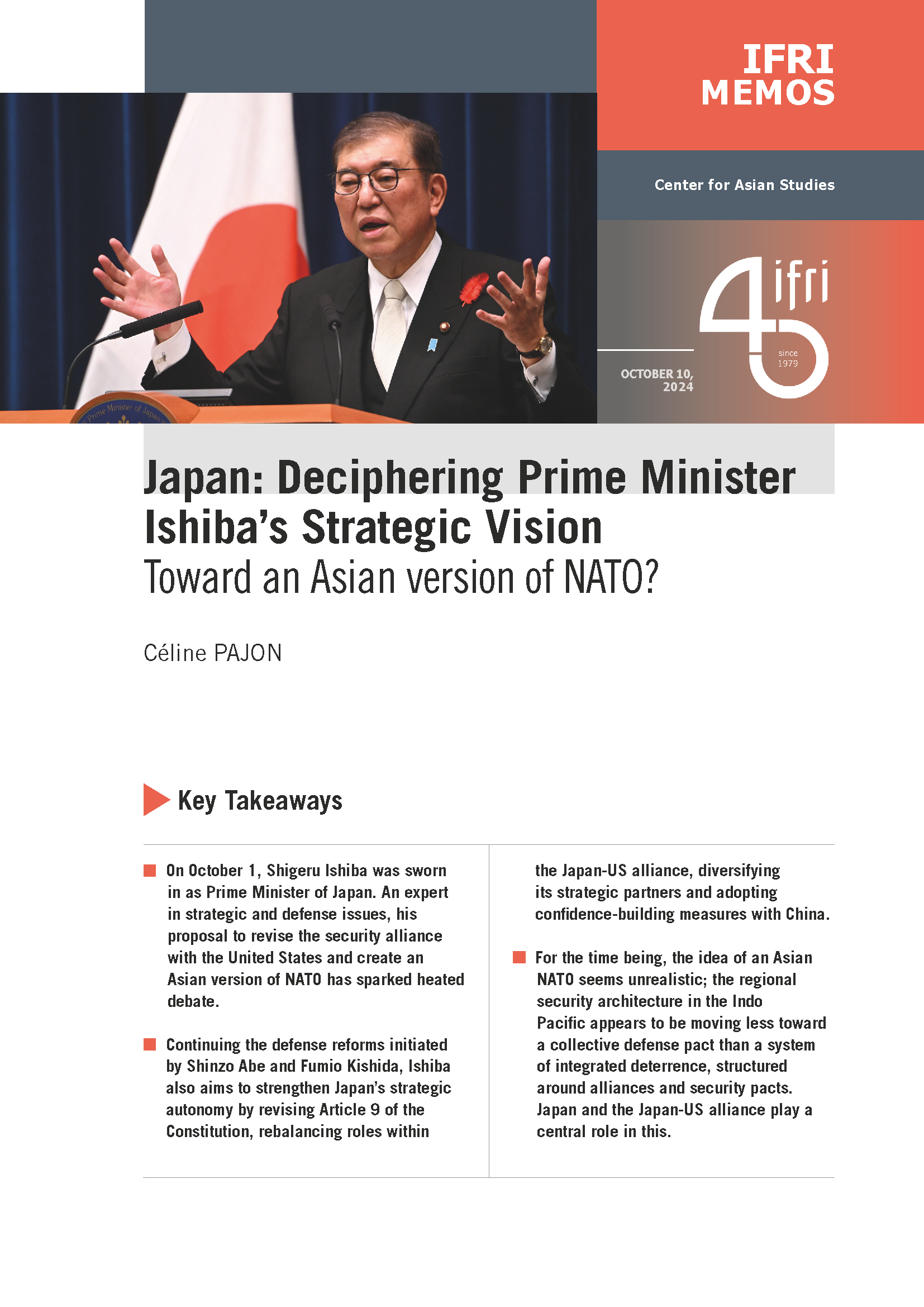China's Two-Track Foreign Policy: From Ambiguous to Clear-Cut Positions

This analysis examines the current ambiguities, priorities and approaches of Chinese foreign policy from a practitioner’s perspective, taking into account experiences of Beijing-based diplomats (interviews conducted in 2011 and 2012), in addition to recent Chinese foreign policy positions and official communications.
It leads to the following conclusions:
- The Chinese position on many foreign policy issues (climate change, nuclear proliferation, etc.) is hard to identify, even by practitioners in regular contact with Chinese diplomacy.
- If ambiguity remains, it is not only because of strategic opacity; on a majority of issues, China has not clearly decided on a position.
- Depending on the issue at stake, China adopts different foreign policy approaches. Two main approaches can be identified: when “core interests” are involved, China has a clear position and may adopt a more proactive foreign policy if needed. For other interests, the Chinese position is often undecided, and remains flexible depending on situational changes. In these cases, China adopts a passive foreign policy approach.
- Rhythm and relationship to time also differs according to this divide: China’s diplomacy tends to be much more anticipative and its decision-making process faster and more streamlined when dealing with “core interests” than with other interests.
- Lately, China’s definition of “core interests” is enlarging (inclusion of South China sea, of economic interests in general terms, etc.). This certainly reflects a reorientation of China’s foreign policy, but not a turning point.
- China’s foreign policy is likely to remain based on these two different approaches in the short and medium run, for several reasons: it is in China’s interest; domestic and international pressures for a more proactive strategy are limited; current foreign policy institutional mechanisms as well as the absence of clear-cut ideological foundations prevent the emergence of a more consistent strategy and; above all, the central government’s top priority remains domestic stability.

Also available in:
Regions and themes
ISBN / ISSN
Share
Download the full analysis
This page contains only a summary of our work. If you would like to have access to all the information from our research on the subject, you can download the full version in PDF format.
China's Two-Track Foreign Policy: From Ambiguous to Clear-Cut Positions
Related centers and programs
Discover our other research centers and programsFind out more
Discover all our analyses
China, technical standardization, and the future of globalization
As the global economy sits at a crossroad between connectivity-driven globalization and strategic decoupling, technical standardization provides a valuable measure of where we are headed.
Japan: Deciphering Prime Minister Ishiba’s Strategic Vision. Toward an Asian version of NATO?
On Tuesday, October 1, Shigeru Ishiba was sworn in as Prime Minister of Japan. His proposal to revise the security alliance with the United States and create an Asian version of the North Atlantic Treaty Organization (NATO) attracted attention and sparked lively debate.

Critical Raw Materials, Economic Statecraft and Europe's Dependence on China
As China tightens export controls on critical minerals, it is important to put Beijing's policies in perspective and analyse how Europe can respond.
China’s Mature Node Overcapacity: Unfounded Fears
China is decoupling from, not flooding, the global mature-node semiconductor market. As China increasingly pursues industrial policies encouraging domestic chip production, its own growing chip demand will prevent a direct flood of cheap Chinese chips on foreign shores. However, as Beijing achieves its goal of decreasing the reliance of domestic downstream manufacturers on foreign chips, European and American mature-node semiconductor companies will feel the ripple effects of an increasingly “involuted” Chinese chip ecosystem.












